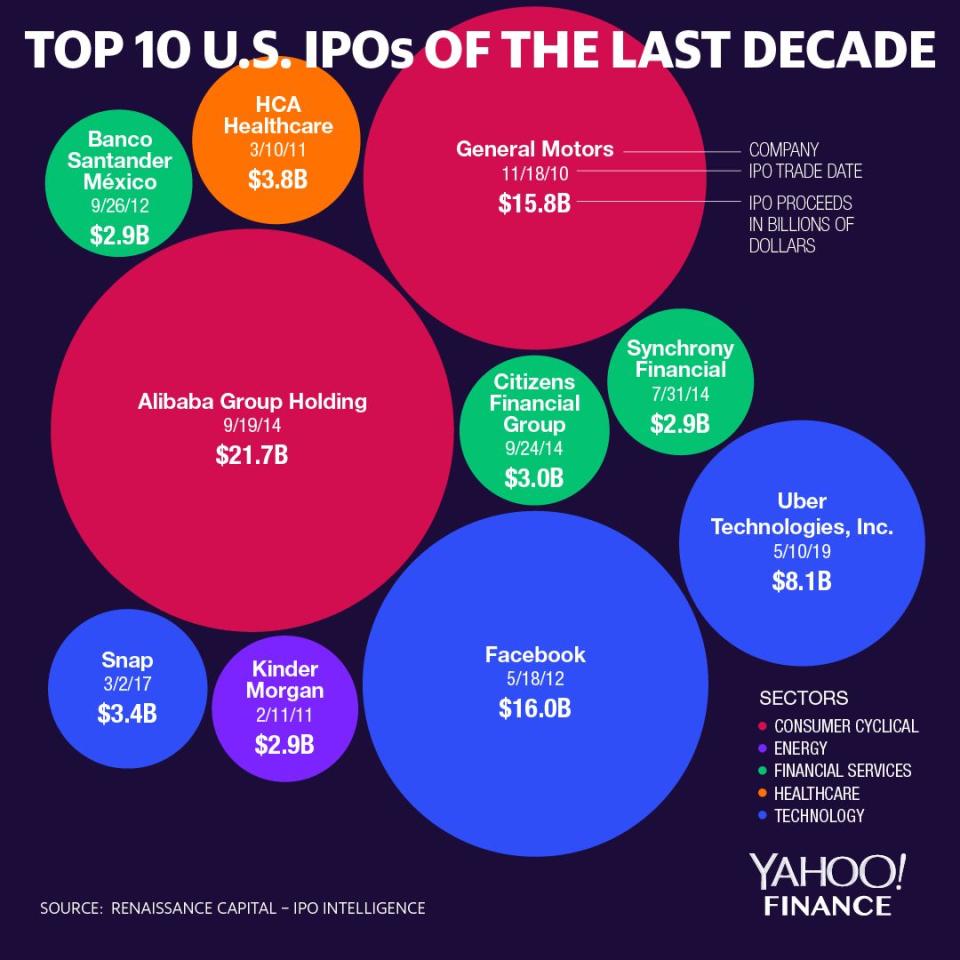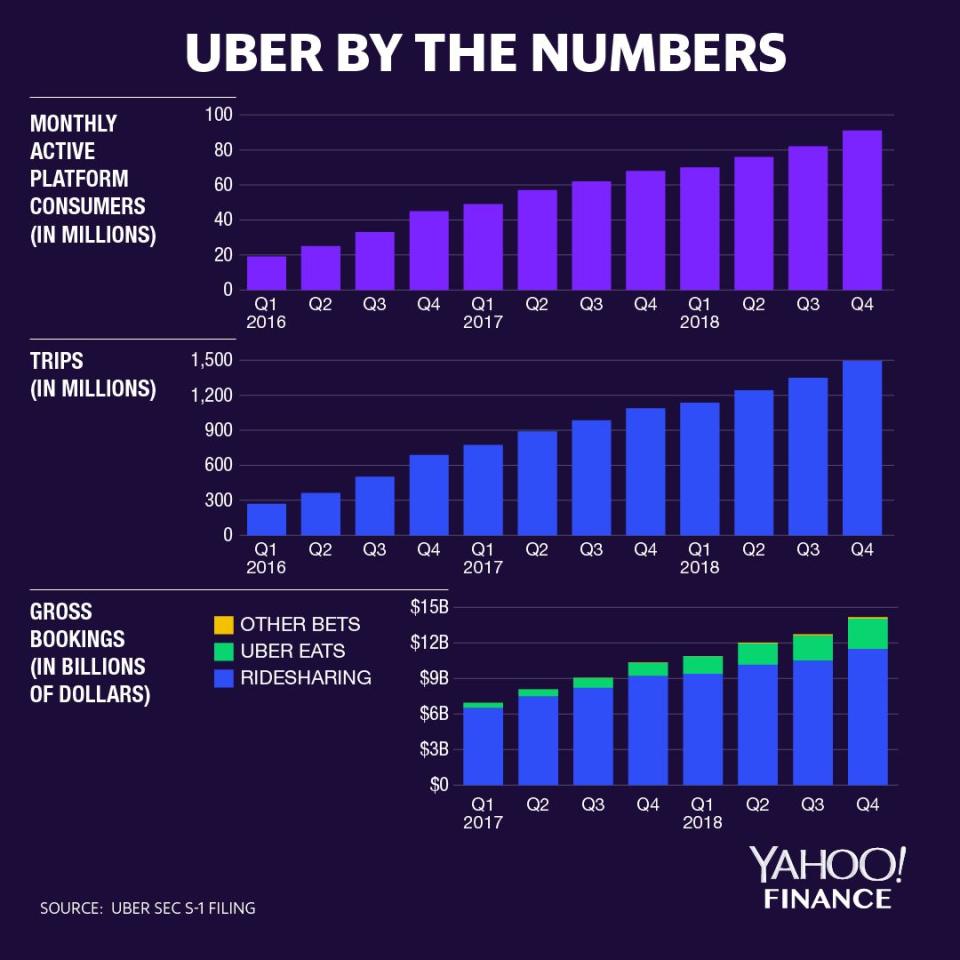Uber's IPO makes history for an unfortunate reason
Uber’s highly-anticipated ride in the public market didn’t get off to a smooth start. As soon as its shares (UBER) started to trade on the New York Stock Exchange Friday afternoon, it fell below its IPO price of $45, which was already on the lower end of its initial pricing.
The ride-hailing giant’s shares dropped as much as 7% but recovered much of its losses within an hour following the first trade. Uber is the first company with a $4 billion-plus offering to open below its IPO price, according to Dealogic data. That said, a company’s stock falling below its IPO price isn’t rare in a debut. So far this year, 10 companies have experienced a similar scenario.
Newly-listed companies fall below their IPO price for multiple reasons. For one thing, current macroeconomic conditions aren’t helping Uber. The U.S. increased tariffs on China Friday as the latest round of trade talks in Washington made little progress. The Dow has plunged 3% this week, largely because of investors’ fear that the U.S.-China trade deal would sink. Tencent-backed Chinese live-streaming company DouYu even delayed its U.S. IPO due to escalating trade tensions, according to Bloomberg.
“I think a lot of things go into pricing an IPO. Market conditions and how two comparable companies perform in the market are two variables that are considered,” John Tuttle, NYSE COO, told Yahoo Finance The First Trade. Uber’s main ride-hailing competitor Lyft (LYFT), which just reported a large loss in its first earnings release, already lost 40% of its valuation after a few weeks as a public company.

Ally Financial in 2014 and China’s electric car maker NIO (NIO) in September 2018 also saw their shares tank on the first day of trading. Following the IPO, the underwriters can place a stabilizing bid, meaning they can purchase stock to decrease supply and support the price.
First-day trading performance may say little about future performance. Facebook (FB) stock had been struggling for years until it found a way to monetize its business. As for Uber, investors are still wondering if there is a way for it to be profitable as the company warns it may never make money. Uber’s multiple business lines, ranging from ride-hailing, food delivery and freight, also make its valuation hard to calculate in traditional models.

Some would like to point to Amazon (AMZN), the e-commerce giant was priced at $18 per share when it went public in 1997 and is now trading at around $2,000 per share. It has grown from an online bookstore to a behemoth that changes the way people shop for everything.
“It's impossible to value [Uber] by traditional metrics,” Scott Clemons, Brown Brothers Harriman's chief investment strategist, told Yahoo Finance The First Trade. “But if there's anything Amazon has taught us, it's the market has become incredibly patient and appreciates the benefit of a network effect and scale.”
Zack Guzman contributed to this article.
Write to Krystal Hu via [email protected] or follow her on Twitter.
Read more:
Amazon shuffles thousands of workers in its quest to revamp delivery
Amazon to offer free one-day shipping to Prime members, will invest $800 million to get there
